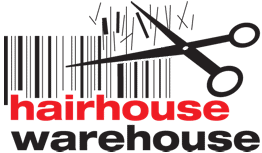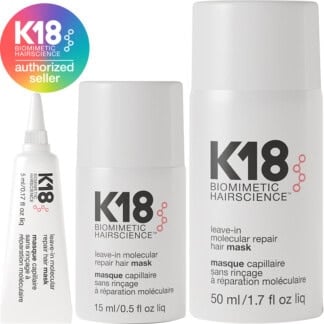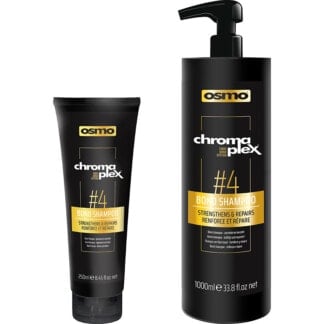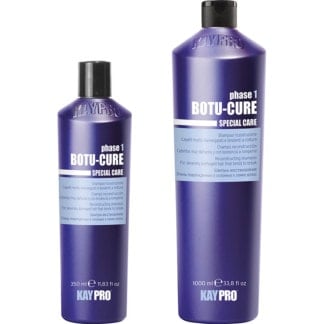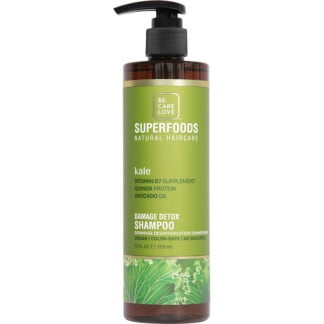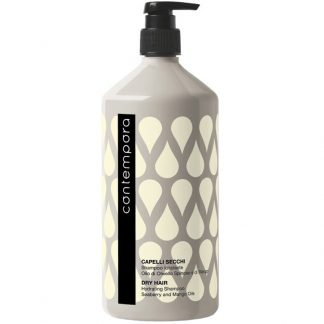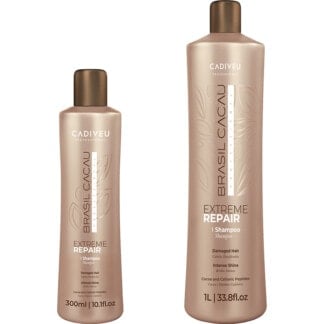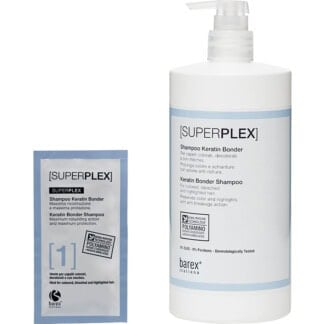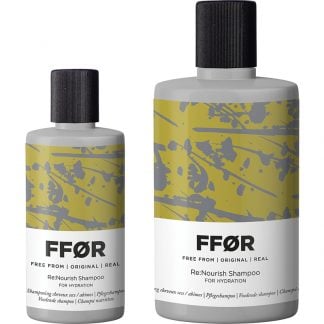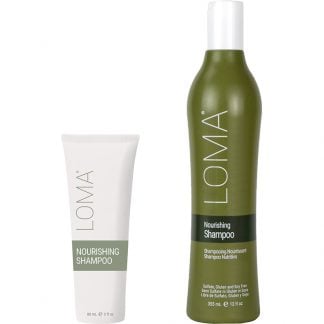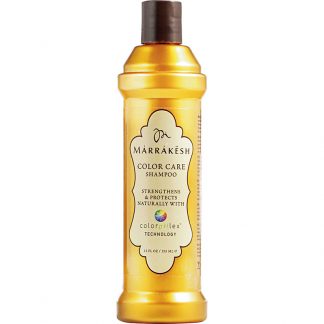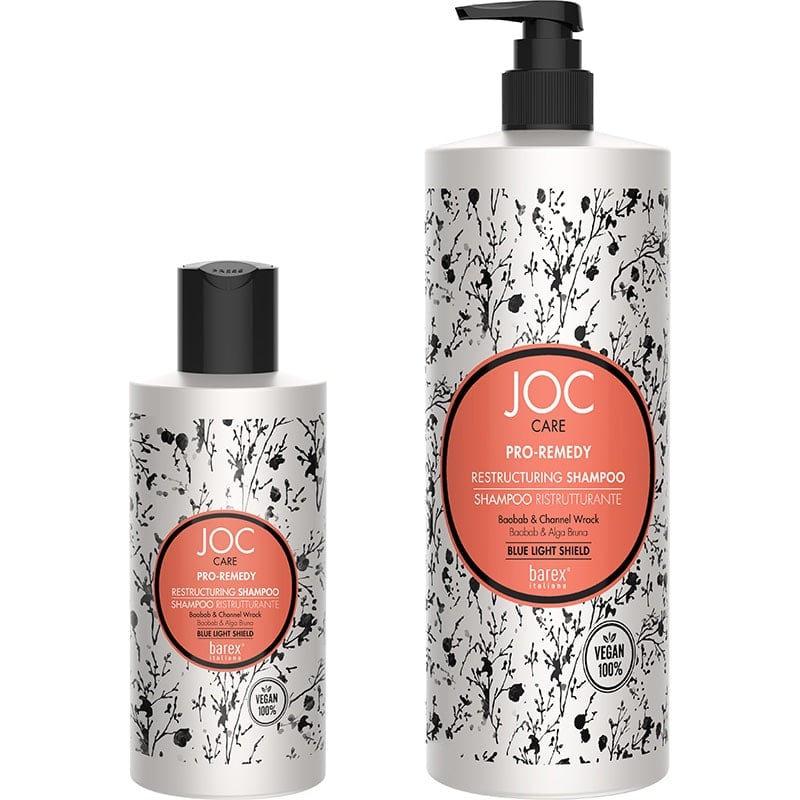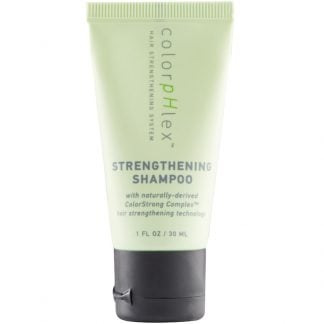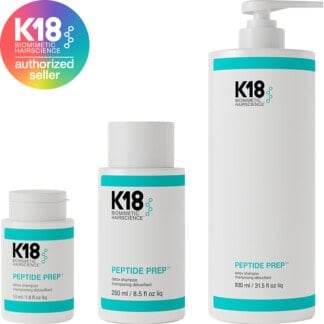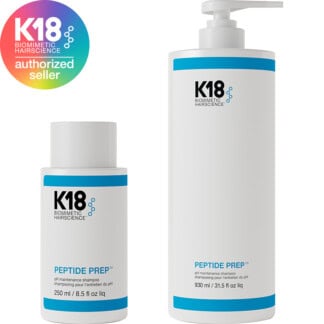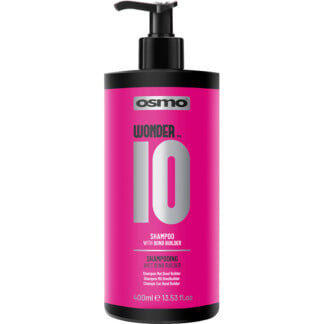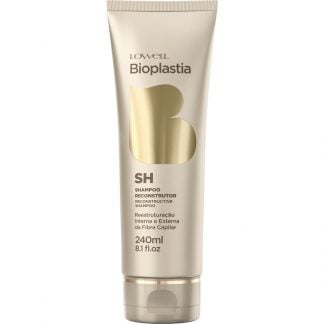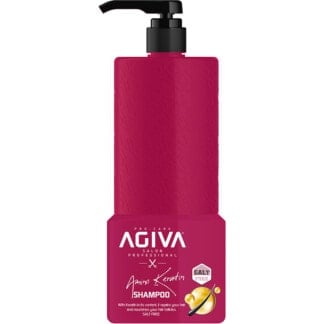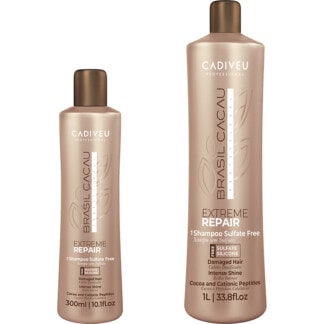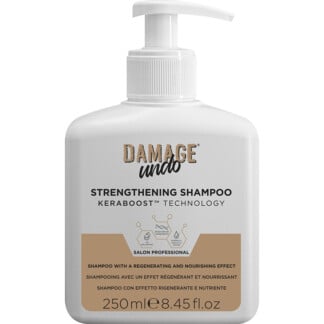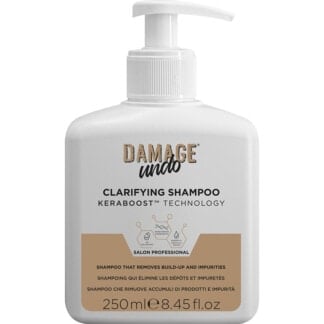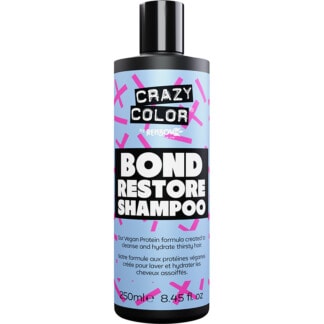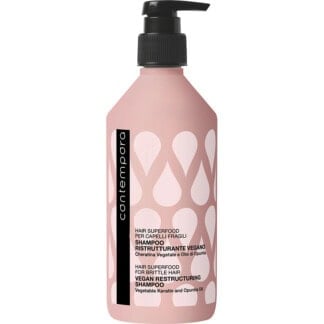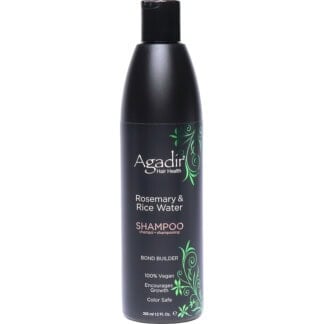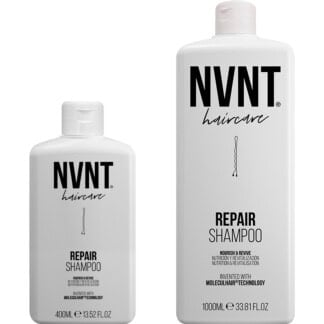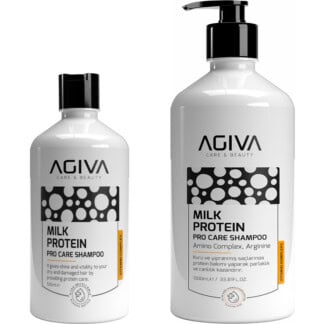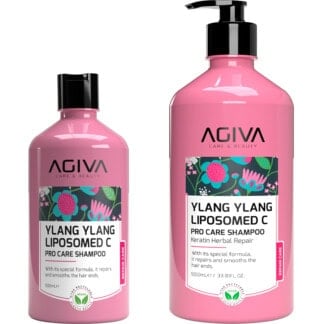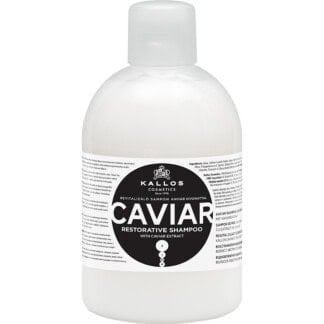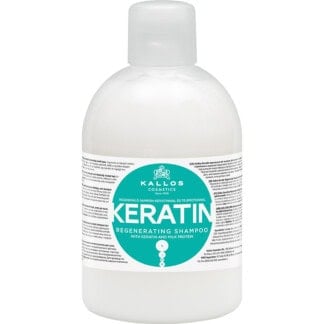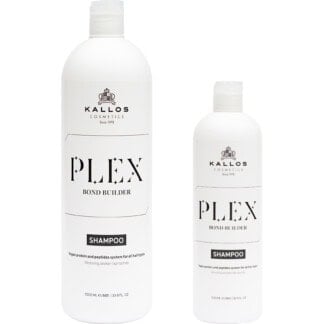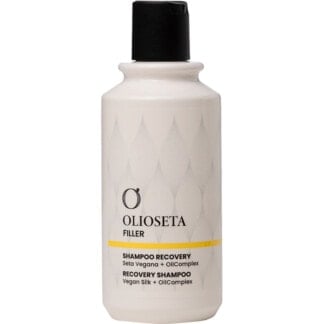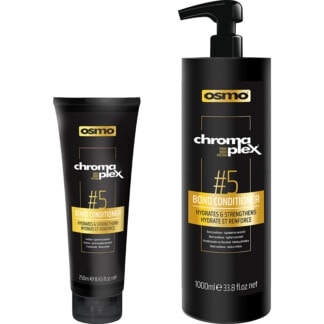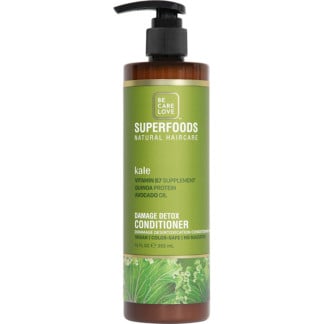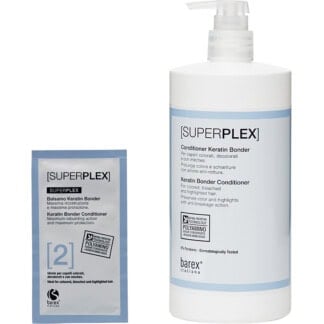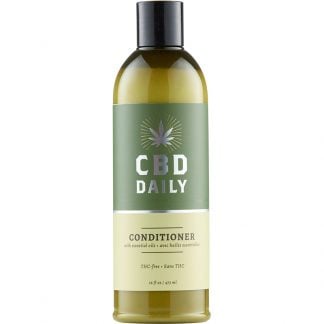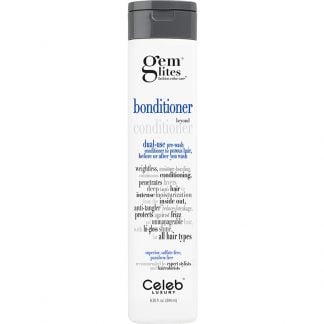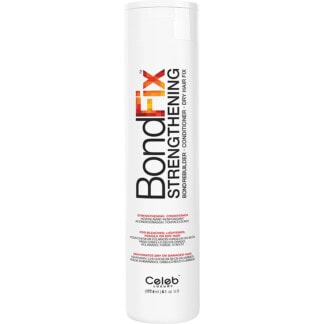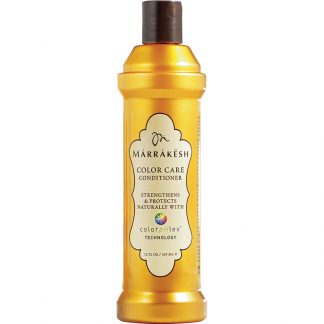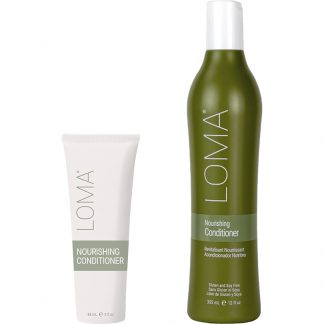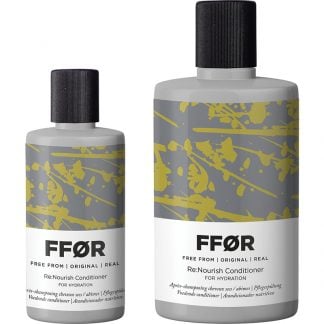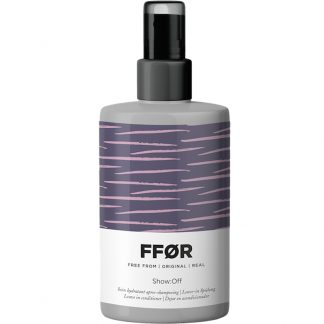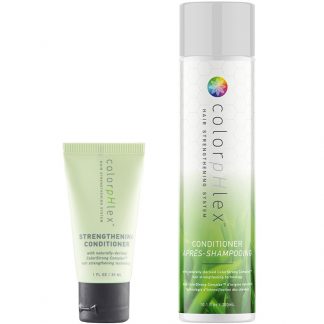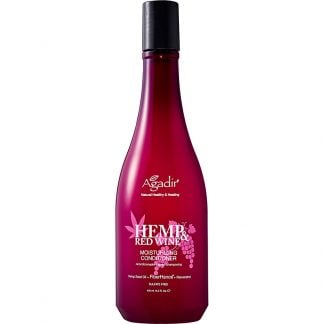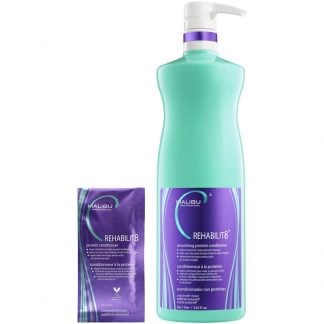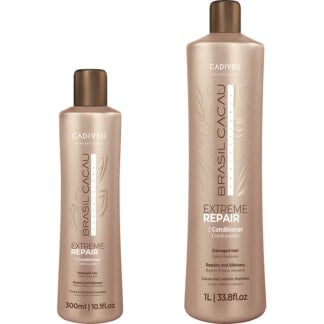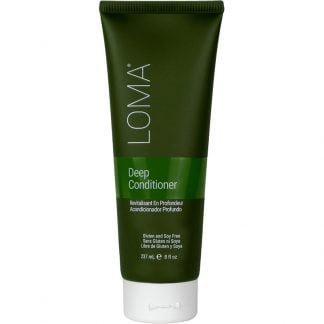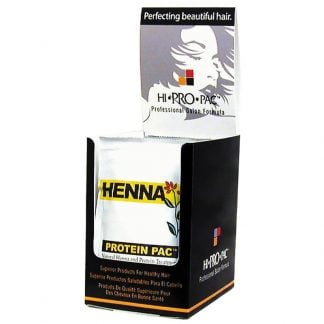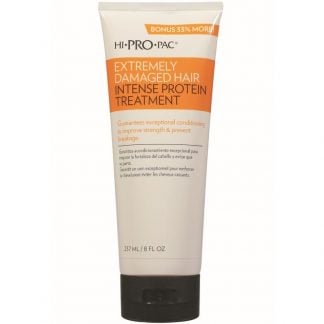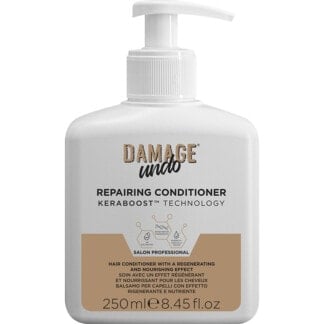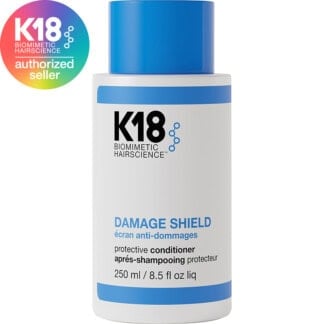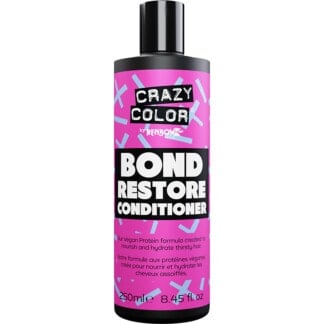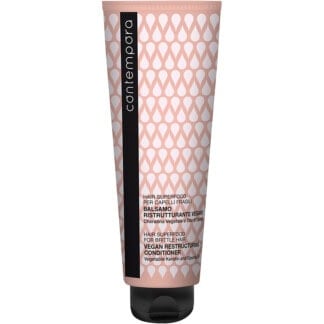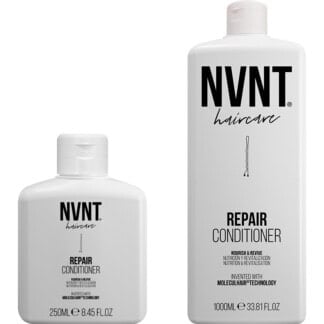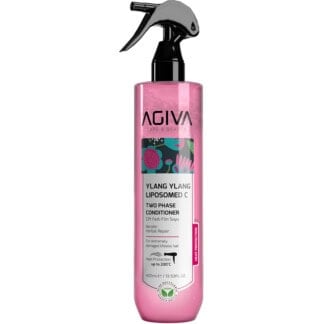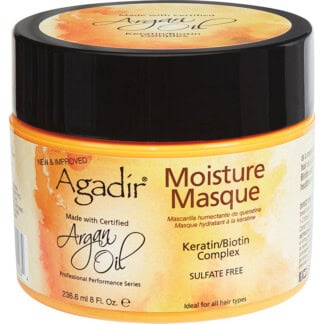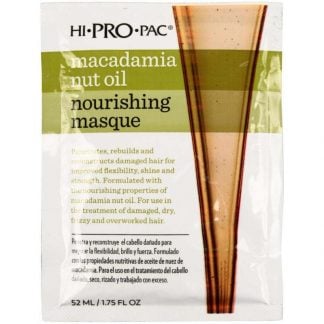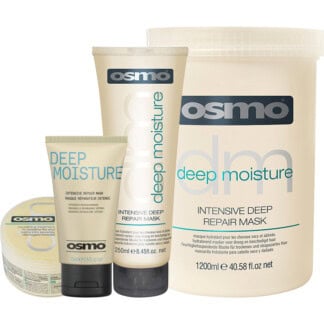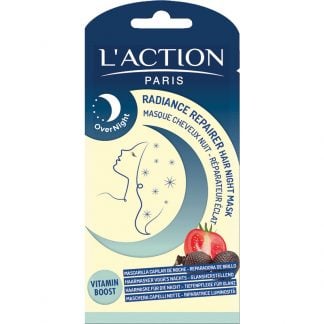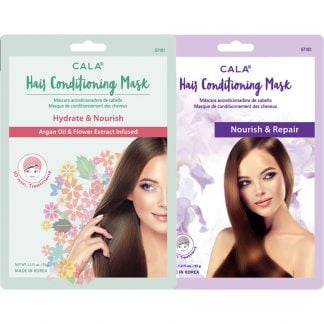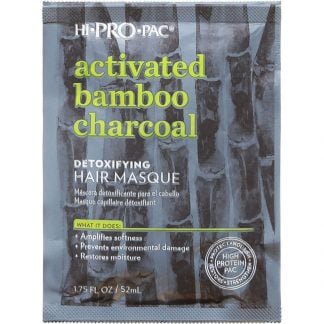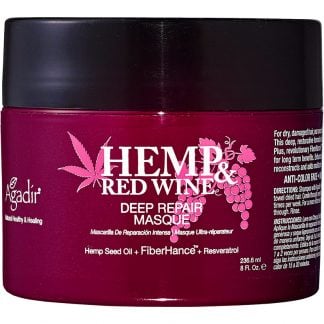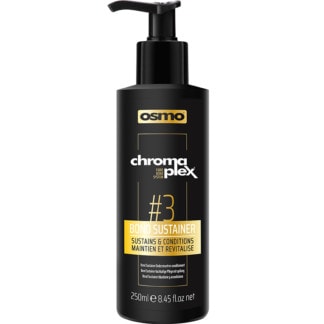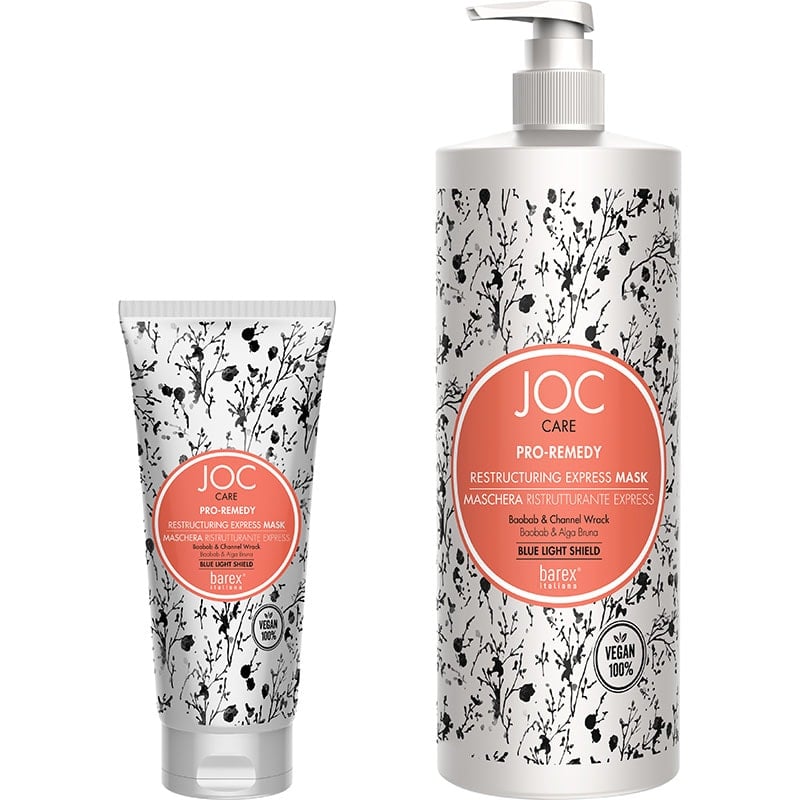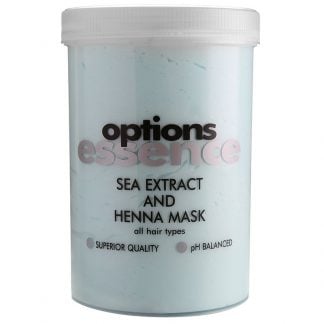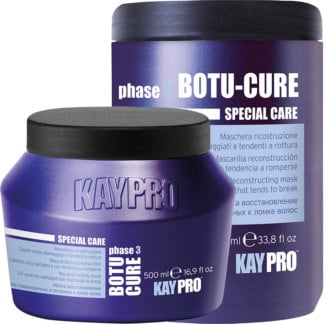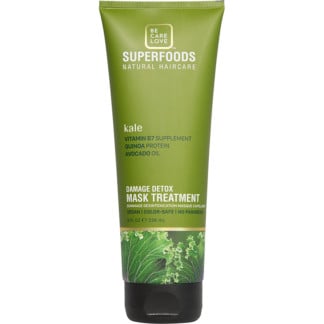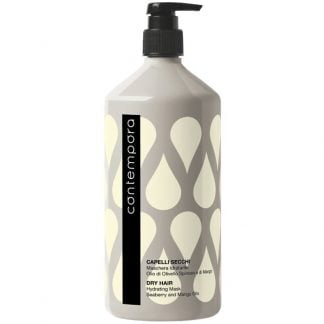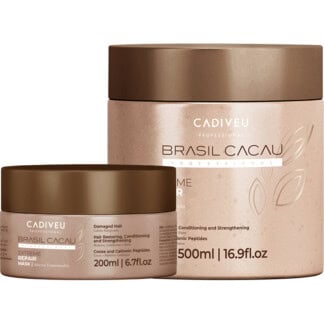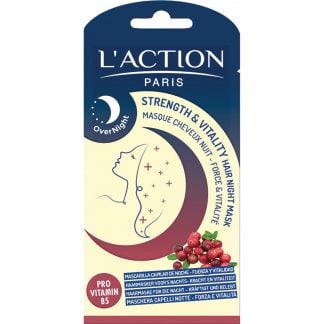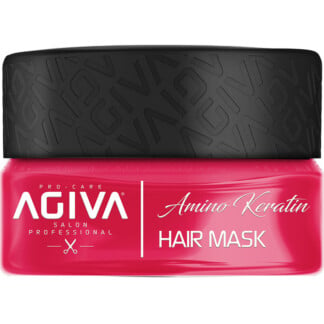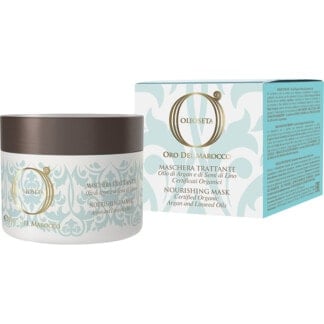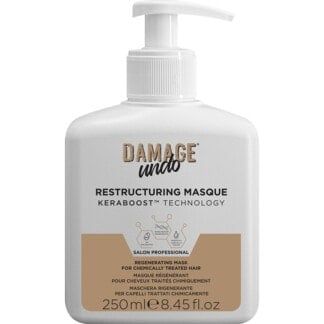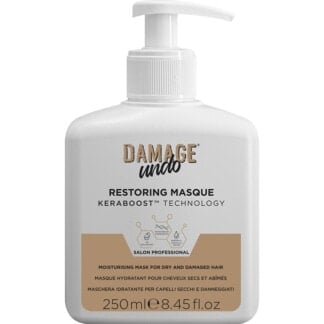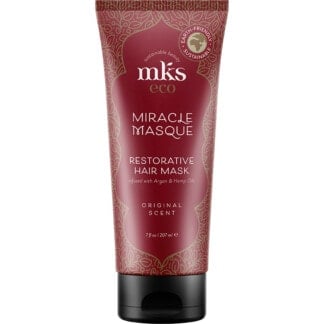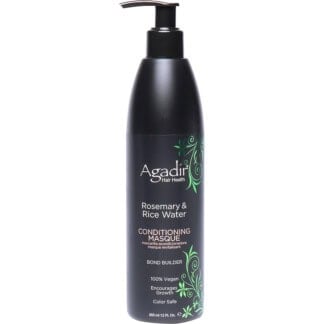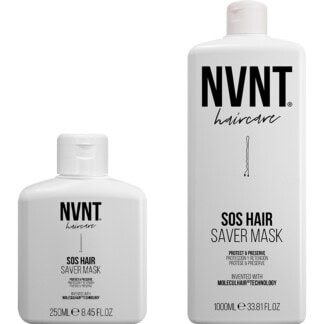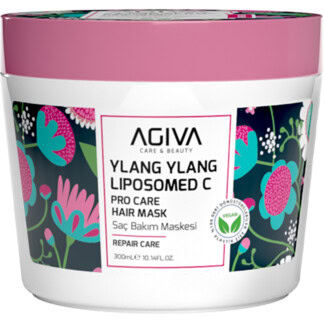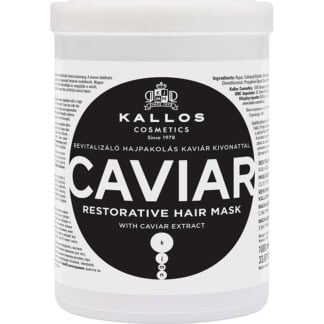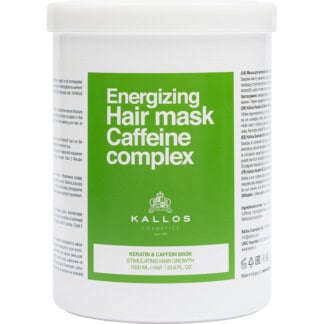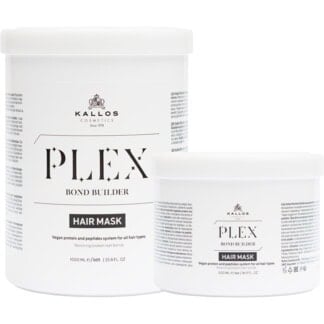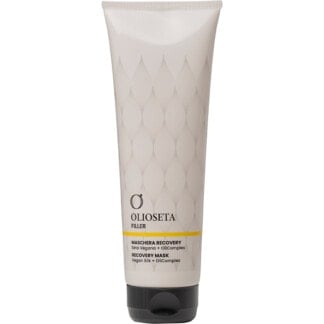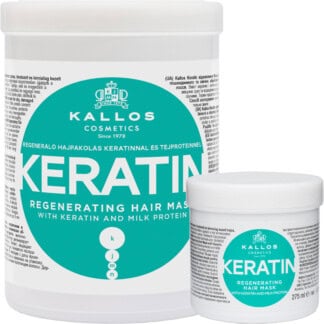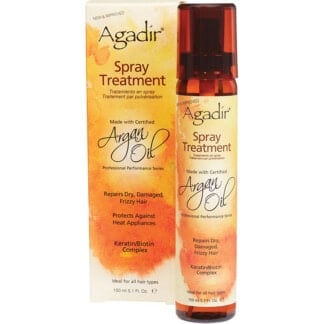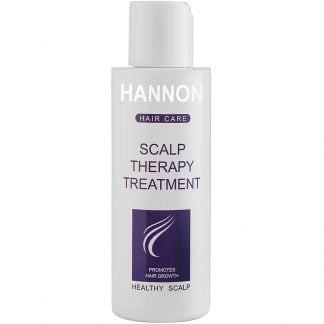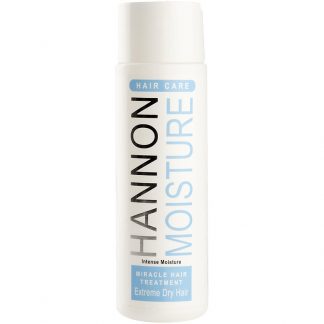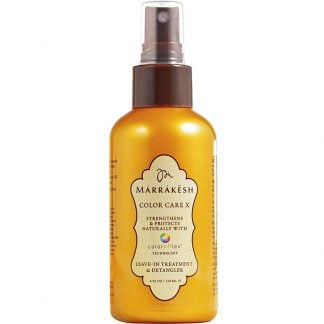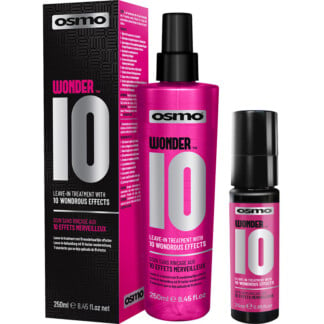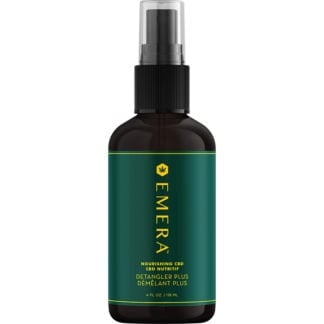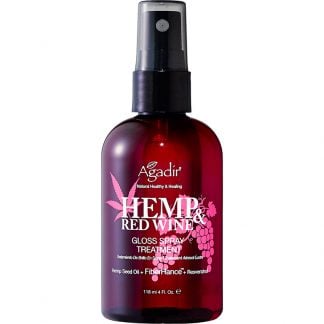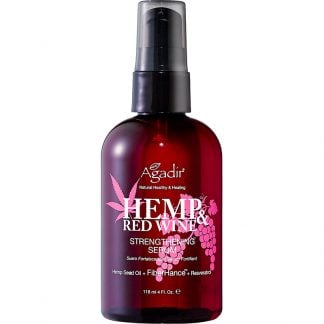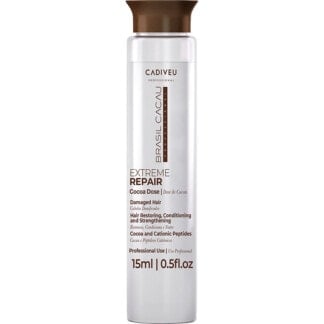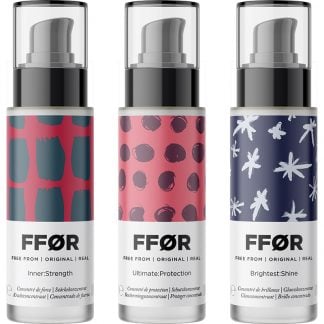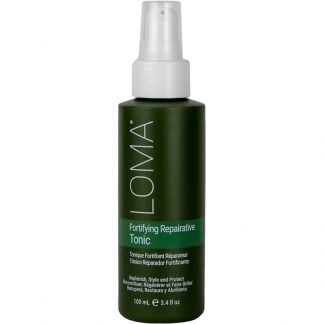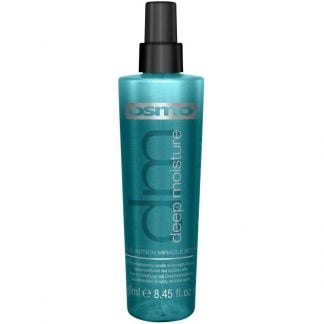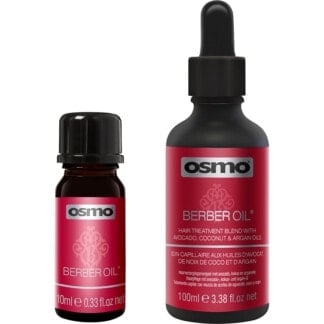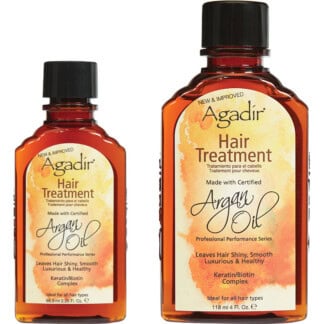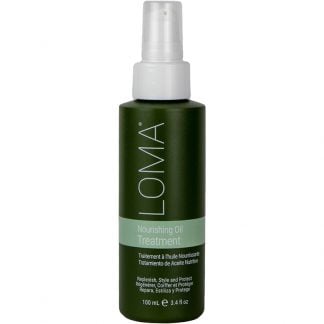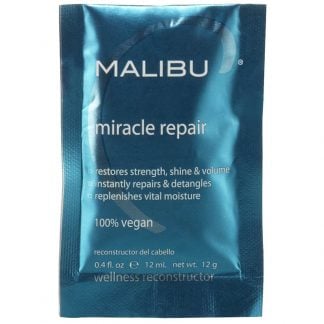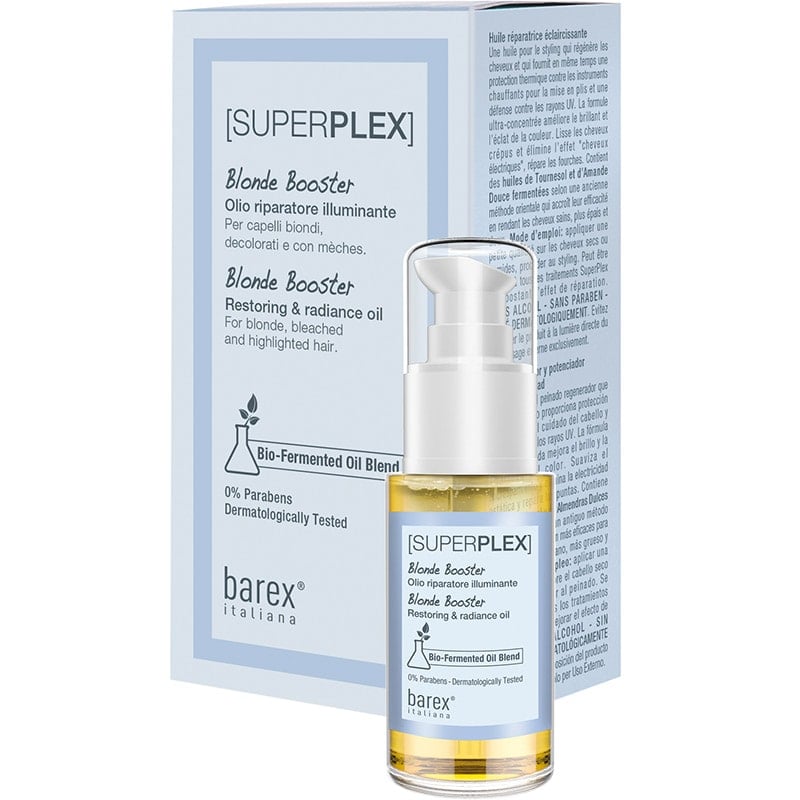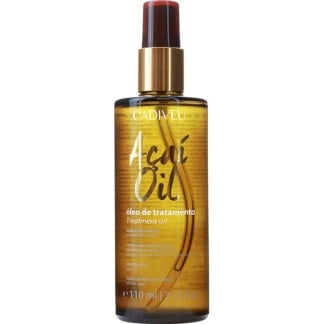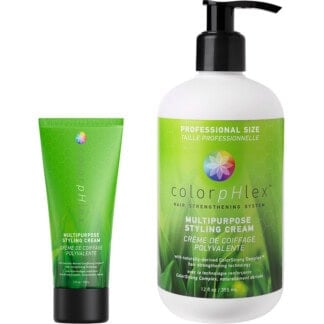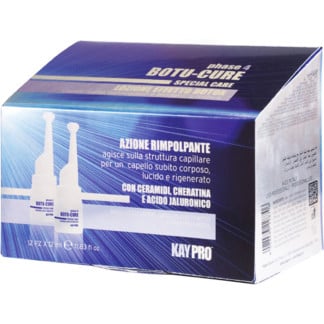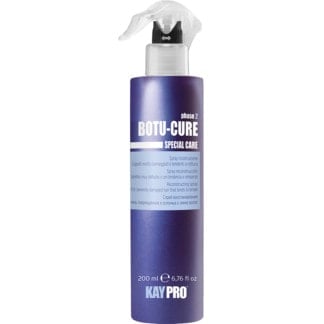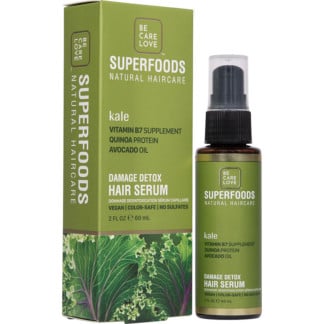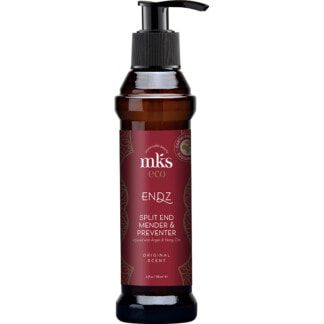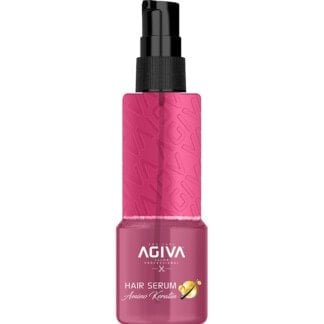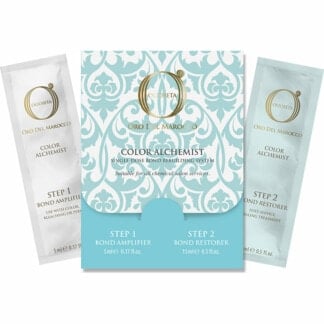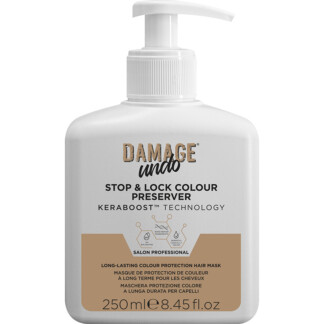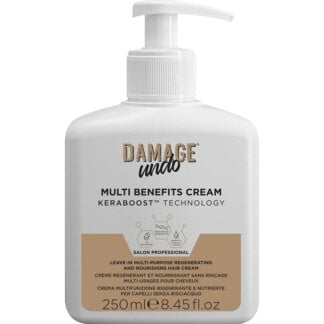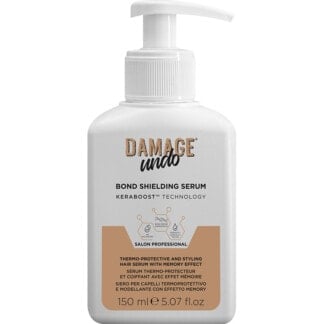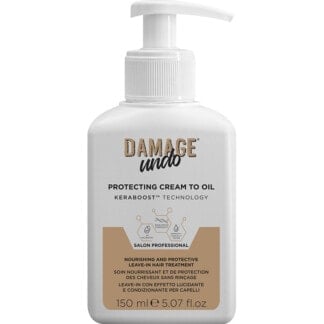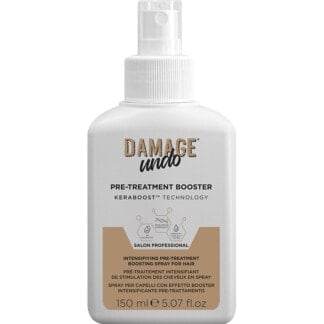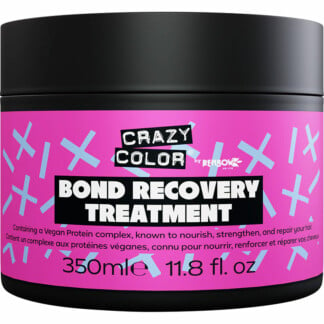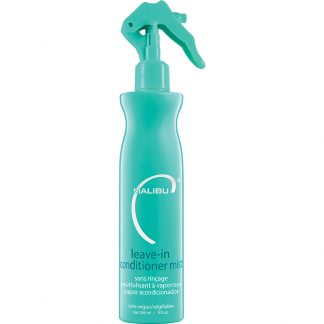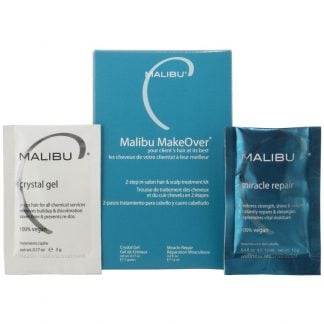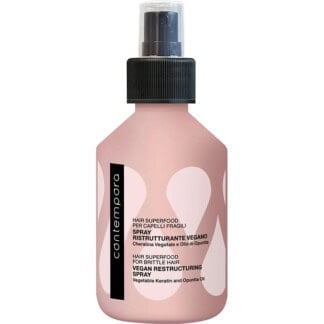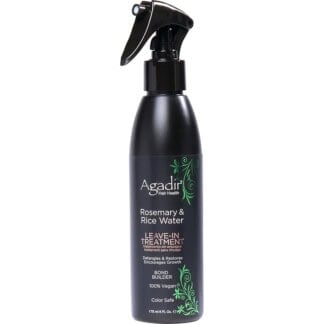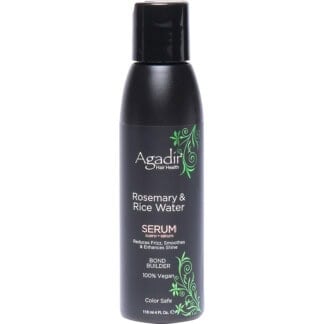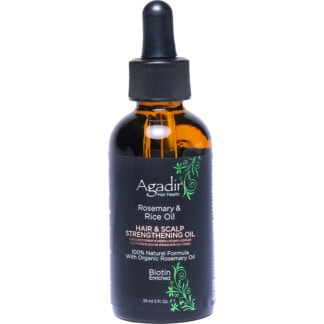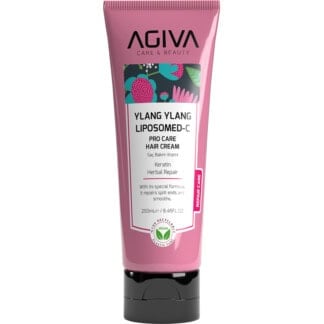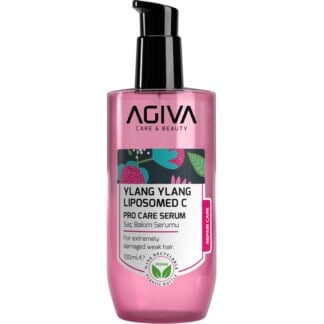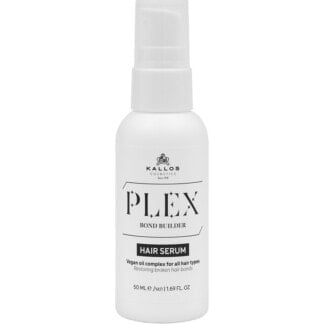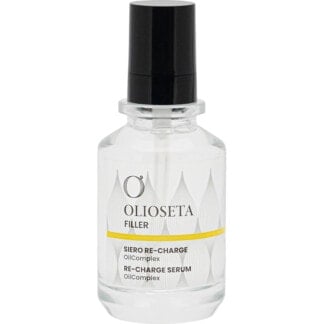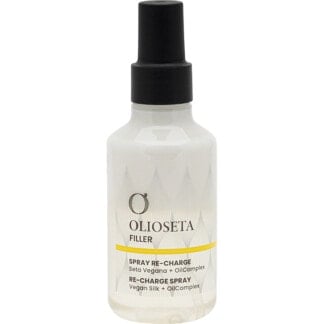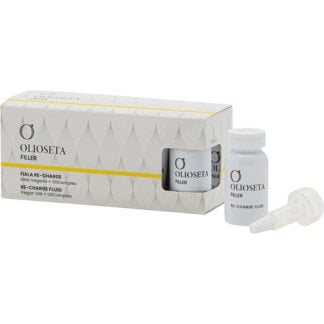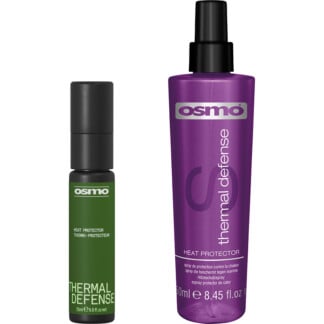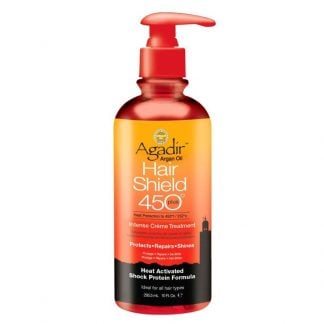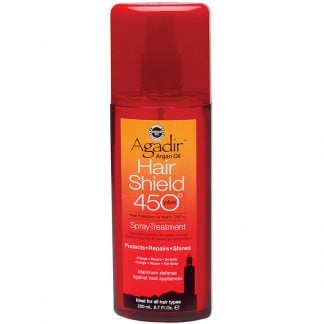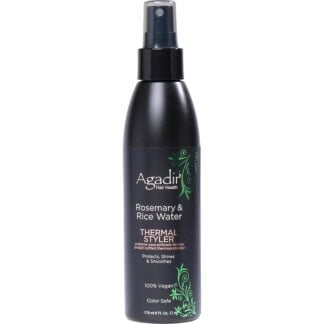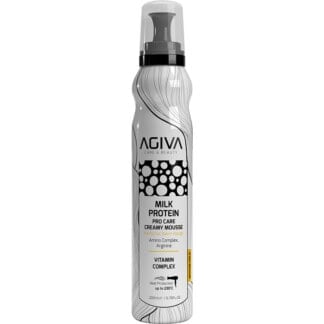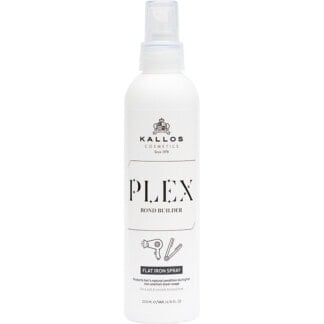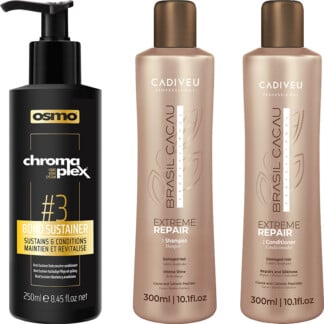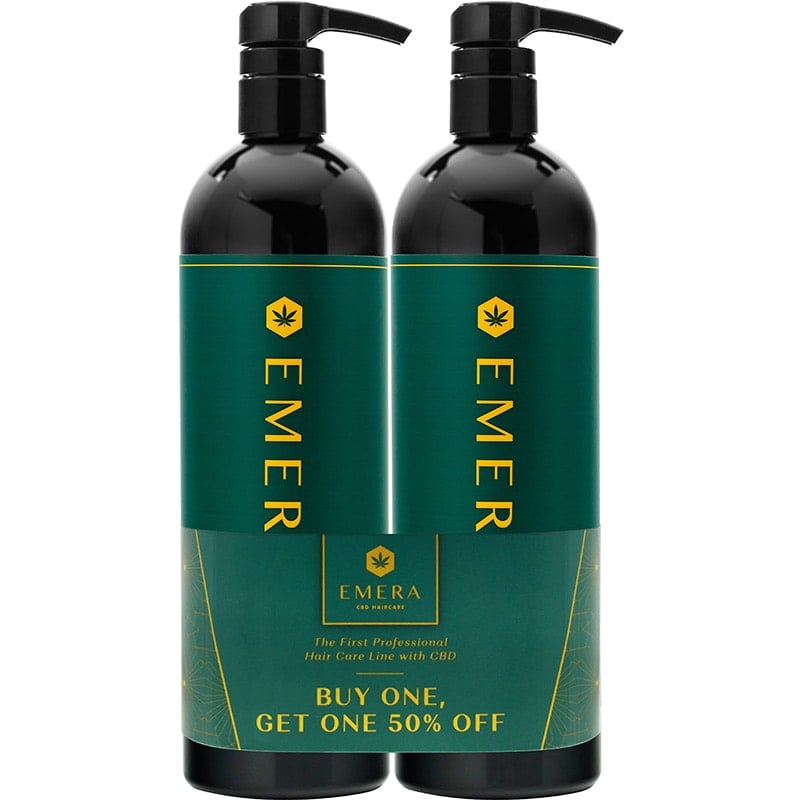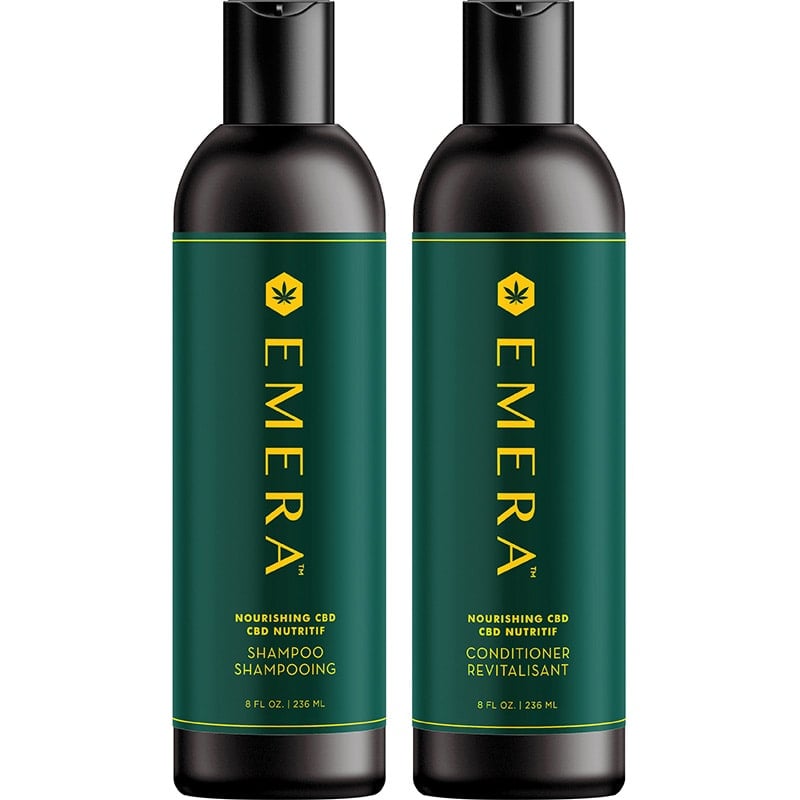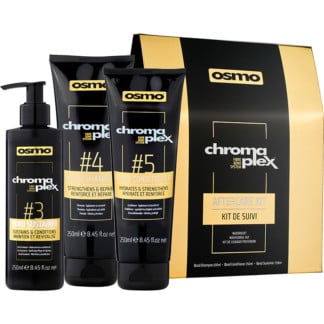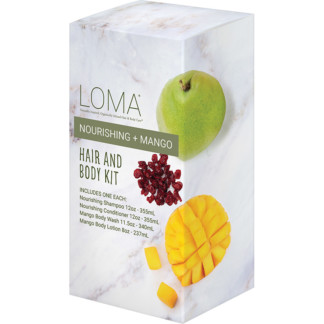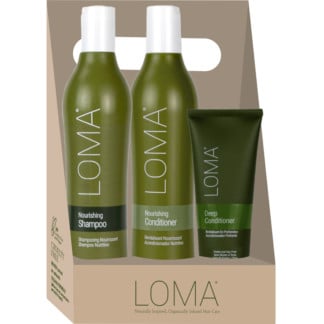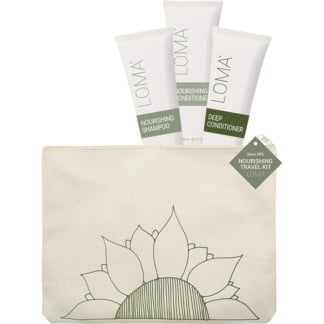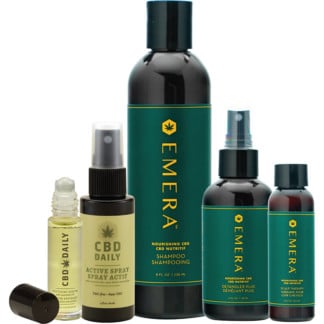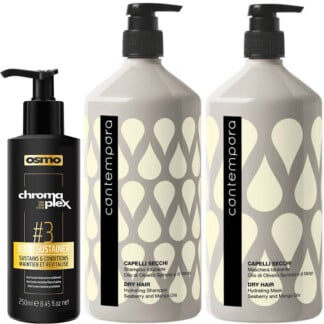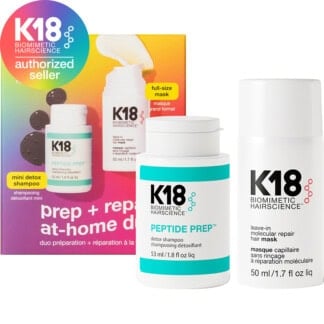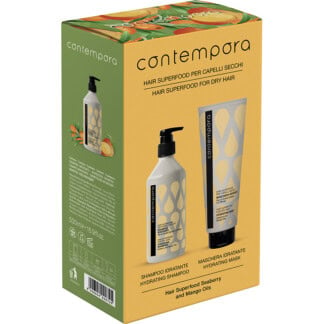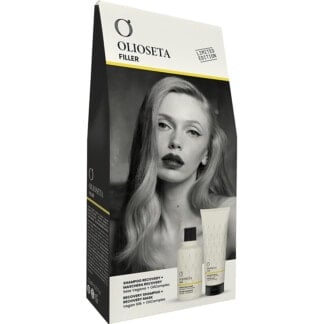
Damaged Hair Got You Down?
In damaged hair, the hair cuticle is stripped of its natural lipids, or ceramides. It develops cracks and lifts away from the hair shaft. The result is hair that’s dry, dull, porous and frizzy.
Damage that goes deeper breaks down bonds in the hair’s structure. This can lead to loss of elasticity, brittleness and breakage. Very damaged hair feels like straw.
How to repair damaged hair
Treat your hair gently, and use the right products.
The best damaged hair treatment products actually repair broken bonds in the hair’s structure. They also repair, smooth and seal the hair cuticle.
For in-depth information about damaged hair causes and concerns, see our damaged hair FAQ below.
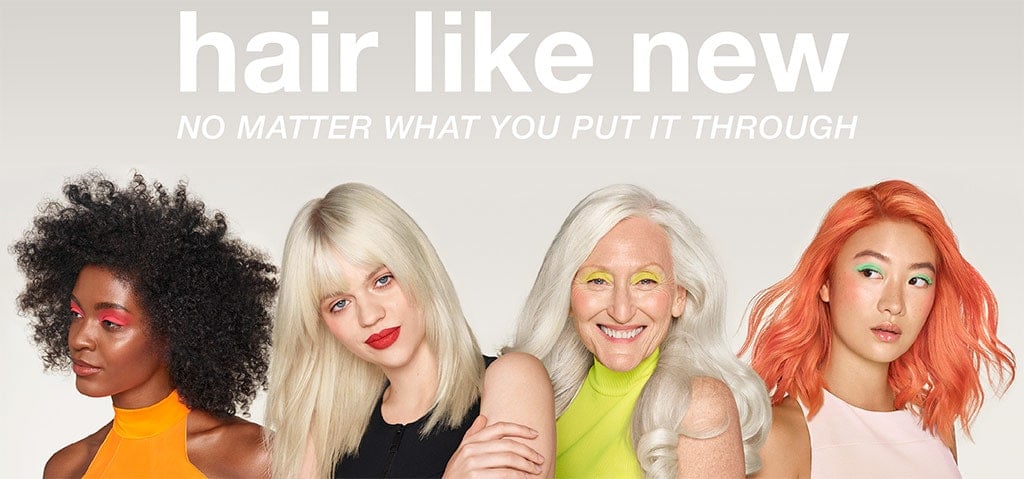
K18 – the ultimate hair repair system.
Treat yourself to K18, the patented and revolutionary hair repair mask that heals the hair from the inside, no matter what you’ve put it through. This is biomimetic hair science, for hair like new.
-
K18 Leave-In Molecular Repair Hair MaskR146.99 – R1,090.05 incl. VATRated 4.78 out of 5 based on 86 customer ratings
Best shampoo for damaged hair
Shampoo that’s specially formulated for damaged hair is free of harsh chemicals and won’t strip out further oils. It also starts the process of repairing the hair fibres. This is the first step to rehabilitate hair damaged by chemicals, exposures, heat and colouring.
-
OSMO Chromaplex #4 Bond Shampoo
Rated 4.67 out of 5R321.52 – R1,151.89 incl. VAT Select options This product has multiple variants. The options may be chosen on the product page -
KAYPRO Botu-Cure Shampoo for Damaged Hair
Rated 4.88 out of 5R202.50 – R337.50 incl. VAT Select options This product has multiple variants. The options may be chosen on the product page -
Be Care Love SuperFoods Damage Detox Shampoo, 355ml
Rated 0 out of 5R435.00 incl. VAT Add to cart -
Contempora Dry Hair Hydrating Shampoo, 1 Litre
Rated 5.00 out of 5R261.10 incl. VAT Add to cart -
Brasil Cacau Extreme Repair Shampoo
Rated 4.90 out of 5R263.79 – R694.68 incl. VAT Select options This product has multiple variants. The options may be chosen on the product page -
Superplex Keratin Bonder Step 1 Shampoo
Rated 4.50 out of 5R21.15 – R536.48 incl. VAT Select options This product has multiple variants. The options may be chosen on the product page -
FFØR Re:Nourish for Hydration Shampoo
Rated 5.00 out of 5R169.66 – R333.77 incl. VAT Select options This product has multiple variants. The options may be chosen on the product page -
LOMA Nourishing Shampoo
Rated 0 out of 5R157.20 – R526.70 incl. VAT Select options This product has multiple variants. The options may be chosen on the product page -
Marrakesh Color Care Shampoo with ColorpHlex Strengthening, 355ml
Rated 0 out of 5R304.90 incl. VAT Add to cart -
JOC Care Pro-Remedy Restructuring Shampoo
Rated 5.00 out of 5R223.69 – R501.64 incl. VAT Select options This product has multiple variants. The options may be chosen on the product page -
ColorpHlex Strengthening Shampoo, 30ml
Rated 5.00 out of 5R52.75 incl. VAT Add to cart -
K18 PEPTIDE PREP™ Detox Shampoo
Rated 4.83 out of 5R109.43 – R2,139.01 incl. VAT Select options This product has multiple variants. The options may be chosen on the product page -
K18 PEPTIDE PREP™ pH Maintenance Shampoo
Rated 4.80 out of 5R481.29 – R2,005.32 incl. VAT Select options This product has multiple variants. The options may be chosen on the product page -
OSMO Wonder 10 Shampoo with Bond Builder, 400ml
Rated 5.00 out of 5R430.40 incl. VAT Add to cart -
Bioplastia Keratin Reconstructive Home Care Shampoo, 240ml
Rated 0 out of 5R235.80 incl. VAT Add to cart -
Agiva Amino Keratin Shampoo, 800ml
Rated 4.00 out of 5R188.00 incl. VAT Add to cart -
Brasil Cacau Extreme Repair Sulphate Free Shampoo
Rated 4.85 out of 5R261.96 – R764.23 incl. VAT Select options This product has multiple variants. The options may be chosen on the product page -
Damage Undo Strengthening Shampoo, 250ml
Rated 0 out of 5R480.94 incl. VAT Add to cart -
Damage Undo Clarifying Shampoo, 250ml
Rated 5.00 out of 5R480.94 incl. VAT Add to cart -
Crazy Color Bond Restore Shampoo, 250ml
Rated 0 out of 5R291.91 incl. VAT Add to cart -
Contempora Hair Superfood for Brittle Hair Vegan Restructuring Shampoo, 500ml
Rated 5.00 out of 5R259.66 incl. VAT Add to cart -
Agadir Rosemary & Rice Water Shampoo, 355ml
Rated 0 out of 5R637.50 incl. VAT Add to cart -
NVNT Repair Shampoo
Rated 0 out of 5R464.35 – R812.62 incl. VAT Select options This product has multiple variants. The options may be chosen on the product page -
Agiva Milk Protein Pro Care Shampoo for Dry & Damaged Hair
Rated 0 out of 5R157.50 – R262.50 incl. VAT Select options This product has multiple variants. The options may be chosen on the product page -
Agiva Ylang Ylang Liposomed C Pro Care Shampoo for Extremely Damaged & Lifeless Hair
Rated 5.00 out of 5R180.00 – R262.50 incl. VAT Select options This product has multiple variants. The options may be chosen on the product page -
Kallos Caviar Restorative Shampoo with Caviar Extract, 1 Litre
Rated 0 out of 5R217.50 incl. VAT Add to cart -
Kallos Keratin Regenerating Shampoo with Keratin & Milk Protein, 1 Litre
Rated 4.50 out of 5R217.50 incl. VAT Add to cart -
Kallos Plex Bond Builder Shampoo
Rated 5.00 out of 5R163.80 – R217.50 incl. VAT Select options This product has multiple variants. The options may be chosen on the product page -
Olioseta Filler Recovery Shampoo, 250ml
Rated 0 out of 5R302.09 incl. VAT Add to cart
Conditioner for damaged hair
Choose a conditioner that’s rich in proteins and natural oils. These deeply penetrate and moisturise the hair. They also help repair and seal the hair cuticles. These conditioners provide a lasting rehabilitation effect, protecting weakened hair from further damage.
-
OSMO Chromaplex #5 Bond Conditioner
Rated 5.00 out of 5R374.09 – R1,441.05 incl. VAT Select options This product has multiple variants. The options may be chosen on the product page -
Be Care Love SuperFoods Damage Detox Conditioner, 355ml
Rated 0 out of 5R435.00 incl. VAT Add to cart -
Superplex Keratin Bonder Step 2 Conditioner
Rated 4.60 out of 5R21.15 – R540.00 incl. VAT Select options This product has multiple variants. The options may be chosen on the product page -
CBD Daily Conditioner, 473ml
Rated 0 out of 5R315.45 incl. VAT Add to cart -
Celeb Luxury Gem Lites Dual-Use Bonditioner, 244ml
Rated 5.00 out of 5R392.06 incl. VAT Add to cart -
Celeb Luxury BondFix Strengthening Conditioner, 177.4ml
Rated 0 out of 5R447.68 incl. VAT Add to cart -
Marrakesh Color Care Conditioner with ColorpHlex Strengthening, 355ml
Rated 0 out of 5R305.00 incl. VAT Add to cart -
LOMA Nourishing Conditioner
Rated 0 out of 5R166.70 – R576.12 incl. VAT Select options This product has multiple variants. The options may be chosen on the product page -
FFØR Re:Nourish for Hydration Conditioner
Rated 0 out of 5R192.28 – R297.35 incl. VAT Select options This product has multiple variants. The options may be chosen on the product page -
FFØR Show:Off Leave-In Conditioner, 250ml
Rated 0 out of 5R378.71 incl. VAT Add to cart -
ColorpHlex Strengthening Conditioner
Rated 0 out of 5R63.30 – R221.00 incl. VAT Select options This product has multiple variants. The options may be chosen on the product page -
Agadir Hemp & Red Wine Moisturizing Conditioner, 430ml
Rated 0 out of 5R311.25 incl. VAT Add to cart -
Malibu C REHABILIT8 Protein Conditioner
Rated 4.50 out of 5R54.90 – R1,139.55 incl. VAT Select options This product has multiple variants. The options may be chosen on the product page -
Brasil Cacau Extreme Repair Conditioner
Rated 4.87 out of 5R269.64 – R768.83 incl. VAT Select options This product has multiple variants. The options may be chosen on the product page -
LOMA Deep Conditioner, 237ml
Rated 0 out of 5R585.00 incl. VAT Add to cart -
Hi Pro Pac Henna Protein Conditioner Sachet, 30ml
Rated 0 out of 5R28.00 incl. VAT Add to cart -
OSMO Wonder 10 Conditioner with Bond Builder, 400ml
Rated 5.00 out of 5R413.19 incl. VAT Add to cart -
Hi Pro Pac Conditioner for Extremely Damaged Hair, 237ml
Rated 0 out of 5R332.64 incl. VAT Add to cart -
Damage Undo Repairing Conditioner, 250ml
Rated 0 out of 5R543.69 incl. VAT Add to cart -
K18 Damage Shield Protective Conditioner, 250ml
Rated 4.60 out of 5R609.82 incl. VAT Add to cart -
Crazy Color Bond Restore Conditioner, 250ml
Rated 0 out of 5R291.91 incl. VAT Add to cart -
Contempora Hair Superfood for Brittle Hair Vegan Restructuring Conditioner, 400ml
Rated 5.00 out of 5R208.50 incl. VAT Add to cart -
NVNT Repair Conditioner
Rated 0 out of 5R507.86 – R812.62 incl. VAT Select options This product has multiple variants. The options may be chosen on the product page -
Agiva Ylang Ylang Liposomed C Two Phase Conditioner & Heat Protection for Extremely Damaged & Lifeless Hair, 400ml
Rated 5.00 out of 5R240.00 incl. VAT Out of stock
Best hair masks for damaged hair
Use a suitable hair mask once a week, or twice weekly for hair that’s very dry or damage. Intense hydration and repairing agents from natural ingredients work deep in hair structure for lasting rehabilitation. Hair is further protected from harmful elements.
-
K18 Leave-In Molecular Repair Hair Mask
Rated 4.78 out of 5R146.99 – R1,090.05 incl. VAT Select options This product has multiple variants. The options may be chosen on the product page -
Truzone Almond Oil & Henna Treatment Mask, 1.2 Litre
Rated 4.80 out of 5R358.75 incl. VAT Add to cart -
Agadir Argan Oil Moisture Masque with Keratin Protein, 236.6ml
Rated 5.00 out of 5R616.60 incl. VAT Add to cart -
Hi Pro Pac Macadamia Nut Oil Nourishing Masque, 52ml
Rated 0 out of 5R48.55 incl. VAT Add to cart -
NEW
OSMO Deep Moisture Intensive Deep Repair Mask
Rated 4.81 out of 5R97.50 – R459.96 incl. VAT Select options This product has multiple variants. The options may be chosen on the product page -
L’Action Paris Radiance Repairer Hair Night Mask, 20ml
Rated 0 out of 5R56.00 incl. VAT Out of stock -
Cala Hair Conditioning Mask, 35g
Rated 0 out of 5R85.00 incl. VAT Select options This product has multiple variants. The options may be chosen on the product page -
Hi Pro Pac Activated Bamboo Charcoal Detoxifying Hair Masque, 52ml
Rated 4.00 out of 5R65.87 incl. VAT Add to cart -
Agadir Hemp & Red Wine Deep Repair Masque, 236.6ml
Rated 5.00 out of 5R486.79 incl. VAT Add to cart -
OSMO Chromaplex #3 Bond Sustainer, 250ml
Rated 5.00 out of 5R500.33 incl. VAT Add to cart -
JOC Care Pro-Remedy Restructuring Express Mask
Rated 5.00 out of 5R266.31 – R622.26 incl. VAT Select options This product has multiple variants. The options may be chosen on the product page -
OSMO Options Essence Sea Extract & Henna Treat Mask, 1 Litre
Rated 0 out of 5R388.31 incl. VAT Add to cart -
KAYPRO Botu-Cure Mask for Damaged Hair
Rated 4.94 out of 5R253.25 – R344.02 incl. VAT Select options This product has multiple variants. The options may be chosen on the product page -
Be Care Love SuperFoods Damage Detox Mask Treatment, 236ml
Rated 0 out of 5R435.00 incl. VAT Add to cart -
Contempora Dry Hair Hydrating Mask, 1 Litre
Rated 5.00 out of 5R318.97 incl. VAT Add to cart -
Brasil Cacau Extreme Repair Mask
Rated 4.92 out of 5R314.43 – R831.20 incl. VAT Select options This product has multiple variants. The options may be chosen on the product page -
L’Action Paris Strength & Vitality Hair Night Mask, 20ml
Rated 0 out of 5R59.10 incl. VAT Out of stock -
Agiva Amino Keratin Hair Mask, 350ml
Rated 4.33 out of 5R295.00 incl. VAT Add to cart -
Olioseta Oro Del Marocco Nourishing Mask, 250ml
Rated 0 out of 5R404.05 incl. VAT Add to cart -
Damage Undo Restructuring Masque, 250ml
Rated 0 out of 5R710.99 incl. VAT Add to cart -
Damage Undo Restoring Masque, 250ml
Rated 0 out of 5R710.99 incl. VAT Add to cart -
MKS eco Miracle Masque Restorative Hair Mask, 207ml
Rated 0 out of 5R399.00 incl. VAT Add to cart -
Agadir Rosemary & Rice Water Conditioning Masque, 355ml
Rated 4.00 out of 5R645.00 incl. VAT Add to cart -
NVNT SOS Hair Saver Mask
Rated 0 out of 5R566.47 – R1,132.90 incl. VAT Select options This product has multiple variants. The options may be chosen on the product page -
Agiva Ylang Ylang Liposomed C Pro Care Hair Mask for Extremely Damaged & Lifeless Hair, 300ml
Rated 5.00 out of 5R240.00 incl. VAT Out of stock -
Kallos Caviar Restorative Hair Mask with Caviar Extract, 1 Litre
Rated 0 out of 5R217.50 incl. VAT Add to cart -
Kallos Energizing Hair Mask with Keratin & Caffeine Complex, 1 Litre
Rated 0 out of 5R229.33 incl. VAT Add to cart -
Kallos Plex Bond Builder Hair Mask
Rated 5.00 out of 5R170.34 – R241.33 incl. VAT Select options This product has multiple variants. The options may be chosen on the product page -
Olioseta Filler Recovery Mask, 250ml
Rated 0 out of 5R410.42 incl. VAT Add to cart -
NEW
Kallos Keratin Regenerating Hair Mask with Keratin & Milk Protein
Rated 4.00 out of 5R112.50 – R217.50 incl. VAT Select options This product has multiple variants. The options may be chosen on the product page
Best hair oils & treatments for dry, damaged hair
Natural oils and treatments nourish and protect the hair, sealing the cuticles against further damage. The best hair oils and treatments do this without weighing down the hair. Dedicated products for repairing brittle and weak hair, with real results.
-
Agadir Argan Oil Spray Treatment, 150ml
Rated 4.88 out of 5R578.17 incl. VAT Add to cart -
Hannon Scalp Therapy Mask & Anti Hair Loss Treatment, 125ml
Rated 4.00 out of 5R372.81 incl. VAT Add to cart -
Hannon Miracle Hair Treatment for Dry & Brittle Hair, 250ml
Rated 4.50 out of 5R412.53 incl. VAT Add to cart -
Marrakesh Color Care X Leave-In Treatment & Detangler with ColorpHlex Strengthening, 118ml
Rated 5.00 out of 5R258.50 incl. VAT Add to cart -
OSMO Wonder 10 Leave-In Treatment
Rated 4.62 out of 5R101.71 – R385.49 incl. VAT Select options This product has multiple variants. The options may be chosen on the product page -
EMERA Nourishing CBD Detangler Plus, 118ml
Rated 0 out of 5R284.85 incl. VAT Out of stock -
Agadir Hemp & Red Wine Gloss Spray Treatment, 118ml
Rated 5.00 out of 5R425.00 incl. VAT Add to cart -
Agadir Hemp & Red Wine Strengthening Serum, 118ml
Rated 0 out of 5R458.95 incl. VAT Add to cart -
Brasil Cacau Extreme Repair Cocoa Dose, 15ml
Rated 4.69 out of 5R94.27 incl. VAT Add to cart -
FFØR Concentrate Drops, 30ml
Rated 0 out of 5R375.00 – R405.15 incl. VAT Select options This product has multiple variants. The options may be chosen on the product page -
LOMA Fortifying Repairative Tonic for Colour, 100ml
Rated 5.00 out of 5R458.95 incl. VAT Add to cart -
OSMO Deep Moisture Dual Action Miracle Repair, 250ml
Rated 4.75 out of 5R257.84 incl. VAT Add to cart -
OSMO Berber Oil Hair Treatment with Argan Oil
Rated 4.00 out of 5R180.71 – R613.37 incl. VAT Select options This product has multiple variants. The options may be chosen on the product page -
Agadir Argan Oil Hair Treatment
Rated 4.90 out of 5R514.38 – R818.86 incl. VAT Select options This product has multiple variants. The options may be chosen on the product page -
LOMA Nourishing Oil Treatment, 100ml
Rated 0 out of 5R449.00 incl. VAT Add to cart -
Malibu C Miracle Repair Sachet, 12g
Rated 5.00 out of 5R87.00 incl. VAT Add to cart -
Superplex Blonde Booster Restoring & Radiance Oil, 30ml
Rated 5.00 out of 5R395.65 incl. VAT Add to cart -
Brasil Cacau Acai Therapy Oil, 110ml
Rated 4.83 out of 5R449.41 incl. VAT Add to cart -
ColorpHlex Multi-Purpose Styling Cream
Rated 3.00 out of 5R191.00 – R463.00 incl. VAT Select options This product has multiple variants. The options may be chosen on the product page -
KAYPRO Botu-Cure Lotion for Damaged Hair, 12 x 12ml
Rated 0 out of 5R768.43 incl. VAT Out of stock -
KAYPRO Botu-Cure Spray for Damaged Hair, 200ml
Rated 5.00 out of 5R321.00 incl. VAT Add to cart -
Be Care Love SuperFoods Damage Detox Serum, 60ml
Rated 0 out of 5R458.95 incl. VAT Add to cart -
MKS eco Endz Split End Mender & Preventer, 118ml
Rated 5.00 out of 5R269.00 incl. VAT Add to cart -
MKS eco Miracle Masque Restorative Hair Mask, 207ml
Rated 0 out of 5R399.00 incl. VAT Add to cart -
Agiva Amino Keratin Hair Serum, 100ml
Rated 4.50 out of 5R188.00 incl. VAT Add to cart -
Olioseta Oro Del Marocco Color Alchemist Single Dose Bond Rebuilding System, 2 Pieces
Rated 0 out of 5R159.72 incl. VAT Add to cart -
Damage Undo Stop & Lock Colour Preserver, 250ml
Rated 0 out of 5R627.32 incl. VAT Add to cart -
Damage Undo Multi Benefits Cream, 250ml
Rated 0 out of 5R543.69 incl. VAT Add to cart -
Damage Undo Bond Shielding Serum, 150ml
Rated 0 out of 5R627.32 incl. VAT Add to cart -
Damage Undo Protecting Cream To Oil, 150ml
Rated 0 out of 5R501.86 incl. VAT Add to cart -
Damage Undo Pre-Treatment Booster, 150ml
Rated 0 out of 5R543.69 incl. VAT Add to cart -
Crazy Color Bond Recovery Treatment, 350ml
Rated 0 out of 5R421.01 incl. VAT Add to cart -
Malibu C Leave-In Conditioner Mist, 266ml
Rated 5.00 out of 5R424.47 incl. VAT Add to cart -
Malibu C MakeOver Treatment Kit, 2 Pieces
Rated 5.00 out of 5R156.00 incl. VAT Add to cart -
Contempora Hair Superfood for Brittle Hair Vegan Restructuring Spray, 200ml
Rated 0 out of 5R303.14 incl. VAT Add to cart -
Agadir Rosemary & Rice Water Leave-In Treatment, 178ml
Rated 5.00 out of 5R510.00 incl. VAT Add to cart -
Agadir Rosemary & Rice Water Serum, 118ml
Rated 5.00 out of 5R690.00 incl. VAT Add to cart -
Agadir Rosemary & Rice Water Hair & Scalp Strengthening Oil, 59ml
Rated 0 out of 5R480.00 incl. VAT Add to cart -
Agiva Ylang Ylang Liposomed C Pro Care Hair Cream for Extremely Damaged & Lifeless Hair, 250ml
Rated 0 out of 5R180.00 incl. VAT Add to cart -
Agiva Ylang Ylang Liposomed C Pro Care Serum for Extremely Damaged & Lifeless Hair, 100ml
Rated 0 out of 5R240.00 incl. VAT Out of stock -
Kallos Plex Bond Builder Hair Serum, 50ml
Rated 0 out of 5R218.42 incl. VAT Add to cart -
Olioseta Filler Re-Charge Serum, 100ml
Rated 0 out of 5R656.68 incl. VAT Add to cart -
Olioseta Filler Re-Charge Spray, 150ml
Rated 0 out of 5R410.42 incl. VAT Add to cart -
Olioseta Filler Re-Charge Fluid, 10 x 15ml
Rated 0 out of 5R615.62 incl. VAT Add to cart
Heat protection for damaged hair
We offer a range of heat protection products, ideal for protecting hair from further damage. It is recommended to use them throughout the day, or prior to certain activities like styling with hot tools. Hair damage is often caused by not protecting the hair prior to activities. Preventing hair damage is much easier than repairing existing hair damage.
-
OSMO Thermal Defense Heat Protector
Rated 4.81 out of 5R97.62 – R275.20 incl. VAT Select options This product has multiple variants. The options may be chosen on the product page -
OSMO Wonder 10 Leave-In Treatment
Rated 4.62 out of 5R101.71 – R385.49 incl. VAT Select options This product has multiple variants. The options may be chosen on the product page -
Agadir Argan Oil Spray Treatment, 150ml
Rated 4.88 out of 5R578.17 incl. VAT Add to cart -
EMERA Nourishing CBD Detangler Plus, 118ml
Rated 0 out of 5R284.85 incl. VAT Out of stock -
Agadir Argan Oil Hair Shield Intense Crème Treatment, 295.5ml
Rated 4.50 out of 5R390.38 incl. VAT Out of stock -
Agadir Argan Oil Hair Shield Spray Treatment, 200ml
Rated 4.00 out of 5R758.30 incl. VAT Add to cart -
Damage Undo Bond Shielding Serum, 150ml
Rated 0 out of 5R627.32 incl. VAT Add to cart -
Agadir Rosemary & Rice Water Thermal Styler, 355ml
Rated 0 out of 5R487.50 incl. VAT Add to cart -
Agiva Milk Protein Pro Care Creamy Mousse & Heat Protection for Dry & Damaged Hair, 200ml
Rated 0 out of 5R210.00 incl. VAT Out of stock -
Agiva Ylang Ylang Liposomed C Two Phase Conditioner & Heat Protection for Extremely Damaged & Lifeless Hair, 400ml
Rated 5.00 out of 5R240.00 incl. VAT Out of stock -
Kallos Plex Bond Builder Flat Iron Spray, 200ml
Rated 0 out of 5R169.25 incl. VAT Add to cart
Damaged hair core solutions
A complete regimen of products for rehabilitating brittle hair.
Also on offer are other hair care packs formulated to help repair damaged, compromised hair.
-
Brasil Cacau Damaged Hair Essential Solution
Rated 5.00 out of 5From R583.56 Select options -
EMERA Nourishing CBD Shampoo & Conditioner Duo Banded Pack
Rated 5.00 out of 5R1,299.38 incl. VAT Add to cart -
EMERA Nourishing CBD Shampoo & Conditioner Duo Gift Set
Rated 4.50 out of 5R522.25 incl. VAT Add to cart -
OSMO Chromaplex Aftercare Kit, 3 Pieces
Rated 0 out of 5R959.07 incl. VAT Add to cart -
LOMA Nourishing + Mango Hair & Body Kit, 4 Pieces
Rated 0 out of 5R835.00 incl. VAT Add to cart -
LOMA Nourishing Trio Kit
Rated 0 out of 5R880.95 incl. VAT Add to cart -
LOMA Nourishing Trio Travel Kit with Cosmetic Bag
Rated 5.00 out of 5R399.00 incl. VAT Add to cart -
EMERA & CBD Daily Spa Collection, 5 Pieces
Rated 0 out of 5R817.65 incl. VAT Add to cart -
Contempora Damaged Hair Essential Solution
Rated 0 out of 5R660.28 incl. VAT Add to cart -
K18 Prep + Repair At-Home Duo Set, 2 Pieces
Rated 0 out of 5R1,270.48 incl. VAT Add to cart -
Contempora Dry Hair Hair Superfood Shampoo & Mask Duo Pack
Rated 0 out of 5R358.91 incl. VAT Add to cart -
Olioseta Filler Recovery Shampoo & Mask Duo Pack
Rated 0 out of 5R798.82 incl. VAT Add to cart
Damaged Hair FAQ
Causes
Common causes of hair damage are:
- heat styling
- chemical treatment, like colouring or bleaching
- rough mechanical treatment, like excessive tugging or a very tight hair style
- prolonged exposure to sun, wind, sea or pool chemicals.
Hair damage can also result from a nutritional deficiency, illness or certain types of medication. If you suspect a health-related cause, it’s best to consult a dermatologist or your GP.
How to repair damaged hair at home: what’s the best approach? The three key steps are to use the right product to repair hair bonds, to replenish moisture and to protect the hair from further damage.
The same steps apply whether you’ve got chemically treated hair or are wondering how to repair damaged natural hair without cutting it.
For step 1, we recommend Osmo Chromaplex Bond Sustainer Step 3.
Colouring hair involves having chemicals penetrate beyond the hair cuticles into the inner hair shaft. This inevitably causes some damage.
Cheap DIY or boxed supermarket hair dyes tend to be the most damaging.
That’s because they’re high in harsh chemicals like ammonia and peroxide.
They’re also missing the nourishing and protective ingredients used in professional, salon-quality hair colour.
Hydrogen peroxide is a common ingredient in hair dyes. It has oxidising and bleaching properties, and can contribute to drying and damage.
Like other bleaching agents, toner can make hair more dry and contribute to hair damage.
A perm uses heat and chemicals to alter the structure of hair.
So just how much does a perm damage your hair? Generally, the chemicals involved are nowhere near as harsh as bleach. However, they can cause damage, especially if not professionally applied.
At best, the process is likely to result in some loss of natural oils and moisture. At worst, it could leave hair brittle and frazzled.
Overly tight hair styles – like very tightly held pony tails – put pressure on the hair follicles. Eventually, this can lead to hair loss.
Below we answer some more specific questions about this.
So-called “bantu knots” are tight, coiled buns on the side of the head.
They can damage or break hair if they’re pulled too tight and then left in for a long time.
To prevent this, start twisting each section of hair about an inch away from the roots. This will reduce pressure on the hair follicles.
Provided they’re clipped in and removed reasonably gently, clip-in extensions won’t cause any hair damage.
Dreadlocks don’t necessarily damage your hair – but it takes know-how to create and maintain them properly.
For example, the process used to create dreadlocks may pull out and break some hair.
If dreadlocks are too tight or heavy, they may put too much pressure on the scalp. Eventually, this can cause alopecia (hair loss).
Also, not washing hair frequently enough, or failing to penetrate thickly matted hair with shampoo, can lead to a build-up of dead skin cells and oils. This may irritate the scalp and interfere with normal hair health.
This is unlikely. However, it’s best not to keep your hair covered or tightly pulled back for long periods.
This puts pressure on the hair follicles and can irritate the scalp.
A wig of decent quality shouldn’t damage your hair.
However, be careful when using wig adhesives. The glue can break or pull out hair.
Avoid wearing a wig that pulls too tightly on your head or that doesn’t let your scalp breathe.
Some wig materials may also irritate the scalp. Typically, capless wigs allow the most air flow and are the most comfortable.
Thinning scissors don’t damage the hair.
However, they can leave your hair looking damaged if they’re not used professionally.
The thinning process leaves your hair with multiple different lengths. A stylist needs to consider the way your hair naturally falls and any kinks or curls. Otherwise, shorter hairs may end up sticking out.
This can make your hair appear scraggly and frizzy.
It’s best to leave thinning to a professional. If you plan on doing it yourself, stick to thinning only the final few inches of your hair.
Pure water isn’t damaging, but municipal water contains chlorine. This can contribute to dryness and damage.
Water may also contain a range of mineral deposits and metals. These may accumulate in the hair, changing its texture and interfering with its normal moisture and pH balance.
Actually, rice water contains vitamins, antioxidants, minerals and starches that can help repair damaged hair.
It’s important not to use old rice water or to leave it in the hair for too long. Otherwise it encourages bacterial growth. It may smell bad and make the hair stiff.
There’s little scientific evidence that rice water makes hair grow faster.
If you’re wondering how to repair damaged hair, natural oils are an important part of the answer. They’re excellent for restoring hair condition.
However, overuse of oils can make hair limp and greasy.
It can also lead to a build-up of grime, block pores on the scalp, cause dandruff and interfere with the production of natural oils.
Oil your hair no more than once or twice a week, and use only a modest amount. A little goes a long way.
Can protein treatments damage hair? Does dry shampoo damage hair? Does viral shampoo damage hair? Does silicone damage hair? These and other questions are common.
None of these products is likely to cause significant hair damage.
However, using low-quality products – or the wrong products for your hair – can compromise the hair’s normal moisture and pH balance.
A build-up of products can also irritate the scalp and interfere with hair health.
Tips
Have hair trimmed regularly to remove damaged or split ends. Aside from that, use same key products as for treating any damaged hair.
Curly hair is no more prone to damage than straight hair – but it may naturally look more frizzy, coarse and dry.
As a result, searches like these are especially common:
- how to restore damaged curly hair
- how to repair damaged 4c natural hair
- how to repair damaged afro hair
Even more than for other hair types, the answer here is moisture – and plenty of it.
Wondering how to repair damaged hair from straightening, blow drying or other heat styling?
How to repair heat-damaged natural hair:
- give your hair regular holidays from heat styling
- when you do heat style, use the lowest possible heat setting
- use a modern, high-quality straightener and hair dryer
- use the right top rated hair products for damaged hair.
Top-rated hair products for damaged hair are specially formulated to restore moisture, repair broken hair bonds and heal and seal the hair cuticles to prevent further damage.
A common question is how to repair heat-damaged hair fast. The truth is that you can’t repair heat damage overnight.
However, combining patience, proper care and the right products will pay off.
Your hair is likely to start looking and feeling better in as little as a couple of weeks.
How to fix damaged hair from dye:
- use a specialised product to repair hair bonds (an example is Osmo Chromaplex Bond Sustainer Step 3)
- always use shampoo and conditioner designed to be gentle on coloured hair
- once a week, add an intensely nourishing hair mask to your regimen.
To help prevent damage from hair dye in the first place, avoid harsh boxed dyes. Aim not to wash your hair for a day or two before colouring. And immediately after colouring, use a deep-conditioning treatment.
Bleach, chemical straighteners and perm chemicals all cause hair damage.
If they’re not properly applied or they’re used too often, the damage can be extreme.
For example, the structure of extreme bleach-damaged hair is completely compromised. Bonds within the hair are broken and the hair becomes brittle, matted and straw-like.
The best way to repair chemical hair damage is to use a specialised product to repair the hair bonds. One example is Osmo Chromaplex Bond Sustainer Step 3.
Also use deeply moisturising shampoos and conditioners that are free of harsh chemicals.
Regular use of a bond-repairing treatment, such as Osmo Chromaplex Bond Sustainer Step 3, is the most likely to help. Also stick with professional, ultra-conditioning shampoo and conditioner.
Unfortunately, extreme damage can’t always be reversed.
At this stage, the best approach is to encourage and protect healthy new hair growth.
Have damaged ends regularly trimmed. Avoid further chemical treatment. And focus on keeping new hair nourished and protected.
Ideally, apply a specialised product to repair the hair bonds. One example is Osmo Chromaplex Bond Sustainer Step 3.
For regular use, stick with ultra-moisturising shampoos and conditioners that are free of harsh chemicals.
Add extra moisture with a mask and hair oil, and protect the hair from further, harsh treatment.
Does brushing your hair damage it?
Using the wrong brush or brushing too roughly can cause split ends and breakage. It can also add static, making hair frizzier.
Opt for a professional quality brush such as a WetBrush for damage-free detangling.
Misc.
It depends how much damage you’re dealing with.
After using a professional hair treatment product for damaged hair, you’ll probably experience an instant improvement. Your hair will look and feel better.
However, it’s likely to take at least a couple of weeks to properly restore and revitalise your hair.
In the case of severe damage, the process will take a lot longer.
We commonly get asked questions like “does flat ironing damage your hair?”, “does a ghd straightener damage hair?” or “do diffusers damage hair?”
The most technologically advanced hair straighteners and hair dryers reduce the damage caused by heat styling. Diffusers can also help, by dispersing heat over a wider area of your hair.
Nonetheless, any frequent or high heat exposure causes some damage.
Heat-damaged hair usually looks dull and frizzy. This is because it has been stripped of moisture, and the cuticle scales have lifted away from the hair shaft.
Too much heat styling can also lead to hair breakage. This can result in lots of uneven lengths and fly-away hairs.
